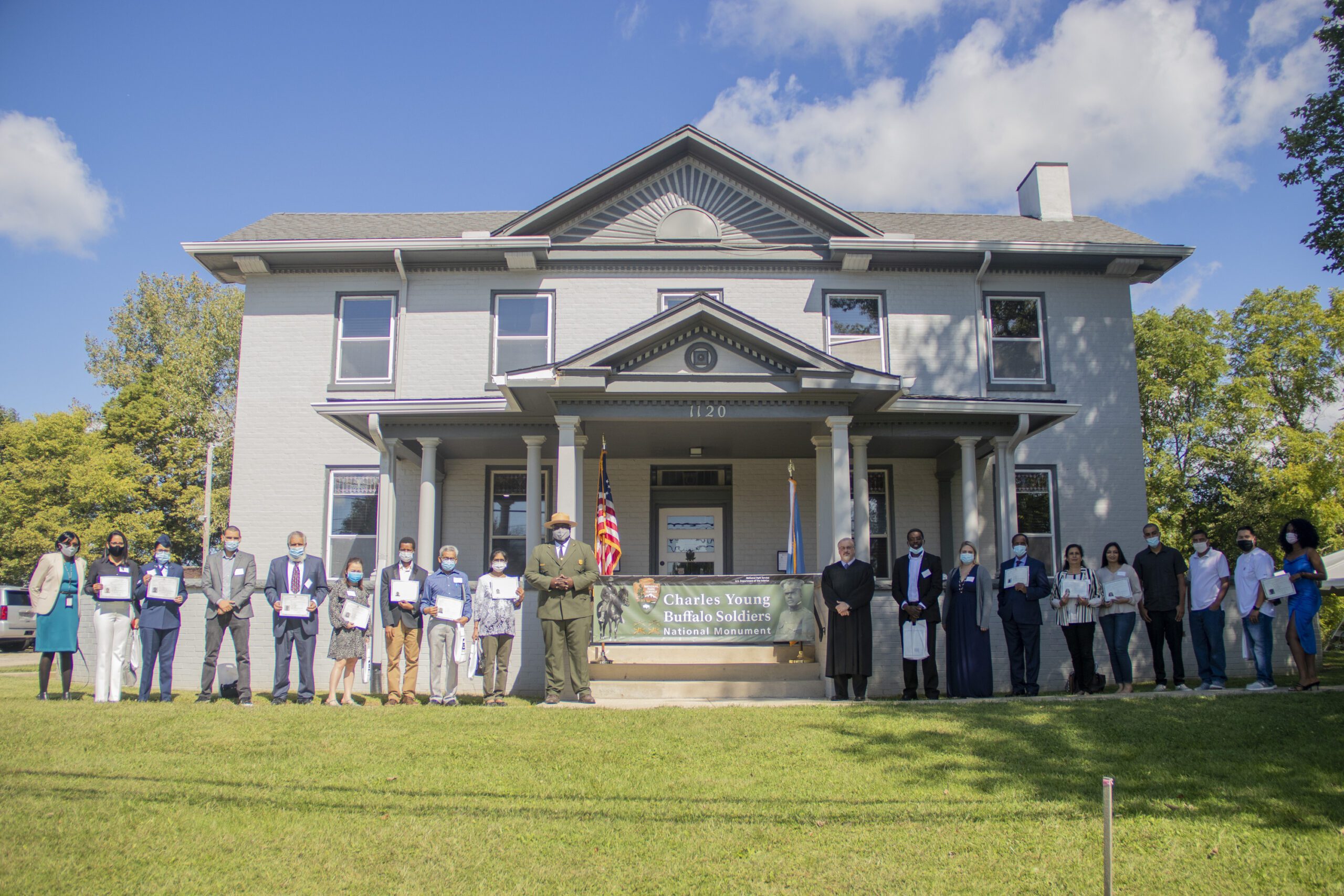“There was a buffalo soldier, In the heart of America….” Against the metronome’s click and thump of a reggae groove, Bob Marley evocates these words before dropping the hammer: “Fighting on arrival. Fighting for survival.”
Music scholars and fans alike can debate the meaning and genesis of these lines from Jamaica’s poet laureate. But, it would not be a stretch to trace their roots back to one important man in America’s history, as well as the men he led: Charles Young and the Buffalo Soldiers.

Mr. Young’s life was as rich and storied as the country he was born into. He came into this world the child of enslaved people Gabriel Young and Arminta Bruen in Mays Lick, Kentucky, in 1864. His father, Gabriel, escaped into Ohio during the Civil War and his service fighting for the Union won him and his young family their freedom in 1865.
From this lowest of stations, few would have guessed the heights he would reach, serving a country that didn’t offer him the same rights as his white counterparts for most of his life.
Charles Young was the third black graduate (ninth to enroll) of the United States Military Academy at West Point, the first black United States National Park superintendent, first black military attaché, first black man to achieve the rank of colonel in the United States Army, and highest-ranking black officer in the regular army until he died in 1922.
Charles graduated from West Point in 1889. He was commissioned as a second lieutenant serving first with the 10th United States Cavalry Regiment before being reassigned to the 9th Cavalry Regiment in Nebraska. Throughout his 28-plus-years of service defending his country, Colonel Young served primarily with black troops like himself (the U.S. armed services were officially segregated until 1948), colloquially christened the “Buffalo Soldiers.” However, it is essential to note that black soldiers have fought alongside white soldiers in the Army since the earliest days.
A memorial commemorating Charles Young and his Buffalo Soldiers was erected in 2013 in Wilberforce, Ohio, by Presidential proclamation.
A must-visit for history and military buffs alike, this hallowed remembrance offers visitors a chance to learn more about the civil rights champion, military hero, and diplomat while also learning about what life was like for the Buffalo Soldiers in the early years of our country.
Located just outside of Dayton, Ohio, this national monument preserves and celebrates the life of the man whose life W.E.B. DuBois once called “a triumph over tragedy” and the thousands of black men who fought and died as second class citizens for their country.
Serving as far back as the Civil War and continuing through the Second World War as segregated units throughout the military, black regiments were as vital to the American expansion to the West as their white counterparts. The term Buffalo Soldier was first coined by native tribes with whom they were engaged for the opposing black regiments’ dark, curly hair and fierce fighting style, and it stuck in the decades that followed.

The Buffalo Soldiers’ legacy and many stories are preserved at this national monument. Visitors can take the Charles Young & Wilberforce cell phone tour, learn about this American hero, and take in exhibits at the nearby National Afro-American Museum and Cultural Center.
For those seeking a physical challenge in the style of this great American hero, visitors can also participate in the 497-mile fitness trek offered by the Park. The excursion commemorates the 497-mile trek undertaken by Colonel Young in 1918, where he rode his horse from Wilberforce to Washington, D.C. (in only 16 days!) to prove his mettle and physical fitness for service. The National Park offers a plan for energetic visitors to track their miles running, hiking, or biking to see how long it takes them to reach the almost 500 miles Col. Young traveled over a hundred years ago.
These places and memorials are more than stops along a road; they offer visitors the chance to learn and celebrate the brave heroes that came before. Against all odds and under the duress of extreme bigotry and adversity, these unstudied heroes defended their country for generations to come.





